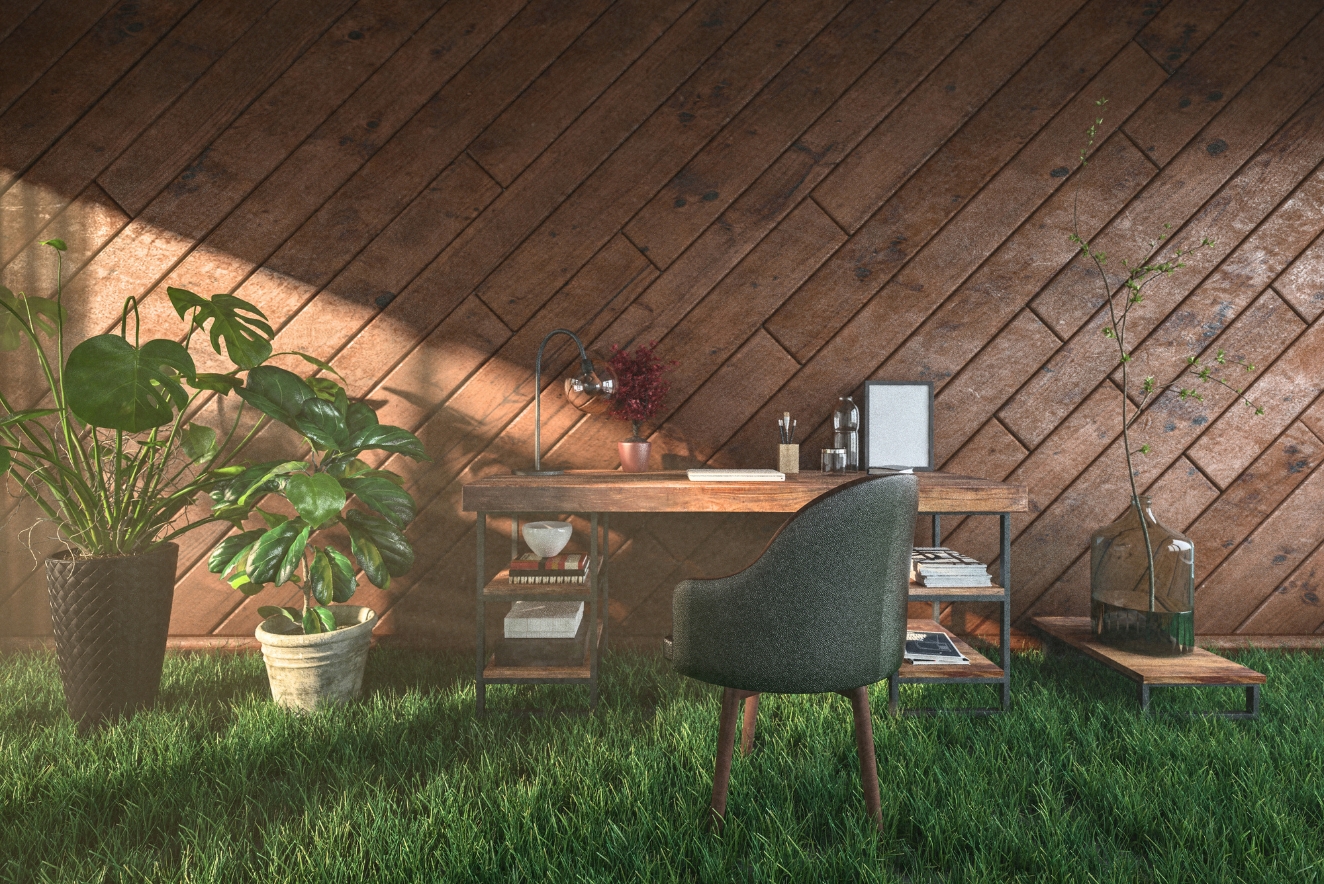Ever caught yourself staring at a heap of plastic packaging or wincing at an eye-watering electricity bill, thinking there must be a better way? You’re not alone!
We all dream of a sustainable home in 2024… but what does that really look like?
When I first dipped my toes into sustainable living, I was a mix of excited and overwhelmed. But here’s the thing – creating a sustainable home isn’t an all-or-nothing game. It’s more like a choose-your-own-adventure book, where every small choice can lead to surprising benefits.
Let’s bust a myth right off the bat: a sustainable home doesn’t mean living off-grid or never buying anything new again. It’s about making mindful choices that fit your life. Sometimes it saves you money (hello, lower energy bills!), sometimes it’s surprisingly practical (who knew homemade cleaners could be so effective?), and often, it’s a boost for your health and well-being.
In this 2024 guide, we’re going to explore the ins and outs of creating and maintaining a sustainable home. Whether you’re a total newbie or you’ve been curious but hesitant to start, we’ve got you covered. We’ll break down easy, practical steps that you can mix and match to create your own version of an eco-friendly living space.
From energy-saving hacks that won’t break the bank to simple swaps that make a big difference, we’ll cover all aspects of a sustainable home. And the best part? You don’t have to transform your entire house overnight. Creating a sustainable home is a journey, not a destination. So, let’s start that journey together, one step at a time.
Ready to discover how a sustainable home can be simpler to achieve, more flexible to your needs, and way more rewarding than you ever imagined? Let’s dive in and start building your happiest life in a sustainable home!”
Energy Efficiency: Strategies to Power Down and Save Up
Energy efficiency is the cornerstone of a sustainable home. Not only does it significantly reduce your carbon footprint, but it also leads to substantial savings on your utility bills. By making smart choices about how we use energy, we can create comfortable, eco-friendly homes without sacrificing modern conveniences. Let’s explore various strategies to boost your home’s energy efficiency, from simple habit changes to tech-savvy upgrades.
Understanding your home’s energy consumption
- Conduct a home energy audit (professional or DIY)
- Use energy monitoring devices to track usage in real-time
- Identify energy-intensive appliances and habits
- Analyze your utility bills to spot consumption patterns and anomalies
Smart thermostat installation and optimal settings
- Choose a programmable or smart thermostat compatible with your HVAC system
- Set optimal temperatures: 68°F (20°C) in winter, 78°F (26°C) in summer when home
- Program lower temperatures when sleeping or away
- Use zoning systems for multi-story homes to heat/cool only occupied areas
- Explore features like geofencing and learning algorithms for enhanced efficiency
LED lighting: brightness without the guilt
- Replace traditional bulbs with LED alternatives (save up to 75% energy)
- Compare lumens instead of watts for brightness (800 lumens = 60W incandescent)
- Utilize smart lighting systems for automated control and dimming
- Consider color temperature for different rooms (warm for relaxing, cool for working)
Energy-efficient appliances: what to look for
- Understand Energy Star ratings and annual energy consumption estimates
- Focus on refrigerators, washing machines, and HVAC systems for biggest impact
- Consider long-term savings vs. upfront costs (payback period)
- Look for appliances with multiple efficiency settings or eco-modes
Unplugging electronics: the sneaky energy vampires
- Identify standby power consumers (e.g., TVs, gaming consoles, chargers)
- Use smart power strips to cut phantom energy use (can save up to 10% on bills)
- Develop habits for unplugging unused devices or using central switch-off points
Optimizing natural light and heating
- Strategic window treatments: reflective blinds in summer, insulating curtains in winter
- Use reflective materials to maximize natural light (light shelves, mirrors)
- Implement proper insulation techniques (walls, attic, floors)
- Consider double or triple-pane windows for better insulation
Renewable energy options for homeowners
- Explore solar panel installation and incentives (federal tax credits, local rebates)
- Consider small-scale wind turbines where applicable (requires specific conditions)
- Investigate geothermal heating systems for long-term savings
- Look into community solar projects if individual installation isn’t feasible
Regular maintenance for optimal efficiency
- Schedule annual HVAC system tune-ups
- Clean or replace air filters monthly
- Seal air leaks around windows and doors
- Insulate hot water pipes to reduce heat loss
Waste Reduction: Journey to a Zero-Waste Home
Reducing waste is a critical aspect of a sustainable home that goes beyond recycling. By adopting a zero-waste mindset, we can significantly decrease our environmental impact and often save money in the process. Let’s explore practical strategies to minimize waste in our daily lives, from smart shopping habits to creative reuse ideas.
Implementing a comprehensive recycling system
- Set up clearly labeled bins for different recyclables
- Learn local recycling guidelines to ensure proper sorting
- Find specialized recycling options for electronics, batteries, and other items
Embracing reusable alternatives to single-use items
- Switch to reusable shopping bags, produce bags, and food containers
- Invest in a reusable water bottle and coffee cup
- Use cloth napkins and towels instead of paper products
Composting 101: turning kitchen scraps into garden gold
- Start a backyard compost bin for yard waste and food scraps
- Explore indoor composting options like vermicomposting for apartments
- Learn what can and can’t be composted to maintain a healthy pile
Mindful shopping: reducing packaging waste
- Buy in bulk to minimize packaging
- Choose products with minimal or recyclable packaging
- Support stores that offer package-free options
Upcycling: breathing new life into old possessions
- Repurpose old items for new uses (e.g., glass jars as storage containers)
- Learn basic repair skills to extend the life of belongings
- Explore creative DIY projects to transform unwanted items
Sustainable Food Choices: Nourish Your Body and the Planet
We’ve said this before: the kitchen is the heart of the home. Thus, in a sustainable home, we want sustainable food.
Our food choices have a significant impact on both our health and the environment. By making conscious decisions about what we eat and how we source our food, we can reduce our carbon footprint while supporting local economies and improving our well-being.
Starting a small vegetable garden or herb pot
Choose easy-to-grow vegetables and herbs suitable for your space
– Implement companion planting for natural pest control
– Use organic gardening methods to avoid harmful chemicals
Supporting local farmers and markets
Shop at farmers’ markets for fresh, seasonal produce
– Join a Community Supported Agriculture (CSA) program
– Look for locally sourced options at your grocery store
Reducing meat consumption
- Introduce meat-free days into your weekly meal plan
- Explore other protein sources like legumes and dairy
- When buying meat, choose sustainably raised, local options
Meal planning to minimize food waste
- Plan meals around ingredients you already have
- Create a shopping list to avoid impulse purchases
- Learn proper food storage techniques to extend shelf life
Preserving seasonal produce: canning, freezing, and drying
- Learn basic canning techniques for fruits and vegetables
- Freeze excess produce for use in off-seasons
- Explore dehydrating as a space-efficient preservation method
Green Cleaning: Ditch the Chemicals, Keep the Sparkle
Green cleaning is not just about protecting the environment; it’s also about creating a healthier home environment. By switching to natural cleaning methods, we can reduce our exposure to harsh chemicals while effectively maintaining a clean, hygienic, and sustainable home.
DIY all-purpose cleaners using natural ingredients
- Create simple cleaners using vinegar, baking soda, and essential oils
- Learn which natural ingredients are best for different cleaning tasks
- Understand the proper dilution and use of natural cleaners
Microfiber cloths: cleaning power without paper waste
- Invest in a set of microfiber cloths for various cleaning tasks
- Learn proper care and washing techniques to extend their life
- Use different colors or patterns for different areas to prevent cross-contamination
Steam cleaning: the chemical-free sanitizing solution
- Explore steam cleaning for floors, bathrooms, and kitchens
- Understand the benefits and limitations of steam cleaning
- Learn safe usage techniques for different surfaces
Essential oils for natural fragrances and disinfection
- Discover which essential oils have antibacterial properties
- Create natural air fresheners and linen sprays
- Use caution with pets and children, as some oils can be harmful
Avoiding harmful chemicals in commercial cleaning products
- Learn to read and understand cleaning product labels
- Identify common harmful ingredients to avoid
- Research and choose eco-friendly commercial cleaning products when necessary
Eco-Friendly Home Decor: Style with a Conscience
Creating a sustainable home doesn’t mean sacrificing style. By choosing eco-friendly decor options, we can express our personal taste while minimizing our environmental impact. Let’s explore ways to beautify our living spaces responsibly.
Choosing sustainable materials for furniture and decor
- Look for FSC-certified wood products
- Explore bamboo, recycled plastic, and other sustainable materials
- Consider the durability and longevity of items when purchasing
Indoor plants for air purification and ambiance
- Choose low-maintenance plants that improve indoor air quality
- Learn proper care techniques for healthy, long-lasting plants
- Use plants creatively as natural decor elements
Thrifting and second-hand shopping for unique finds
- Explore local thrift stores, flea markets, and online marketplaces
- Learn to spot quality pieces that can be upcycled or restored
- Embrace the charm of vintage and pre-loved items
DIY decor projects using reclaimed materials
- Repurpose pallets, old furniture, or salvaged wood for new decor
- Create art pieces from recycled materials
- Learn basic DIY skills for customizing and updating existing items
Selecting non-toxic paints and finishes for renovations
- Choose low-VOC or zero-VOC paints for interior walls
- Explore natural finishes like beeswax or linseed oil for wood
- Understand the impact of different materials on indoor air quality
To get more ideas on interior design, read our ultimate guide on interior design principles Interior Design Principles 101: Master Your Home’s Aesthetic
Your Green Home Adventure Starts Now!
Congratulations! You’ve just taken a comprehensive tour of how to create a sustainable home. From energy efficiency to eco-friendly decor, we’ve covered a wide range of strategies to help you create a more sustainable living space. Remember, the key to success is starting small and building momentum. You don’t need to implement everything at once – choose a few ideas that resonate with you and gradually incorporate more as you go.
Living sustainably is a journey, not a destination. It’s about making conscious choices that align with your values and lifestyle. As you implement these changes, you’ll likely discover even more ways to reduce your environmental impact while creating a healthier, more comfortable home.
Don’t be discouraged if you face challenges along the way. Every small step counts, and your efforts contribute to a larger global movement towards sustainability. Share your experiences with friends and family – you might just inspire others to join you on this rewarding path.
So, what’s your first step going to be? Whether it’s switching to LED bulbs, starting a small herb garden, or creating a recycling station in your kitchen, take that step today. Your future self – and the planet – will thank you for it.
Remember, sustainable living isn’t about perfection; it’s about progress. So start where you are, use what you have, and do what you can. Here’s to your green home adventure – may it be fulfilling, fun, and full of positive change!








